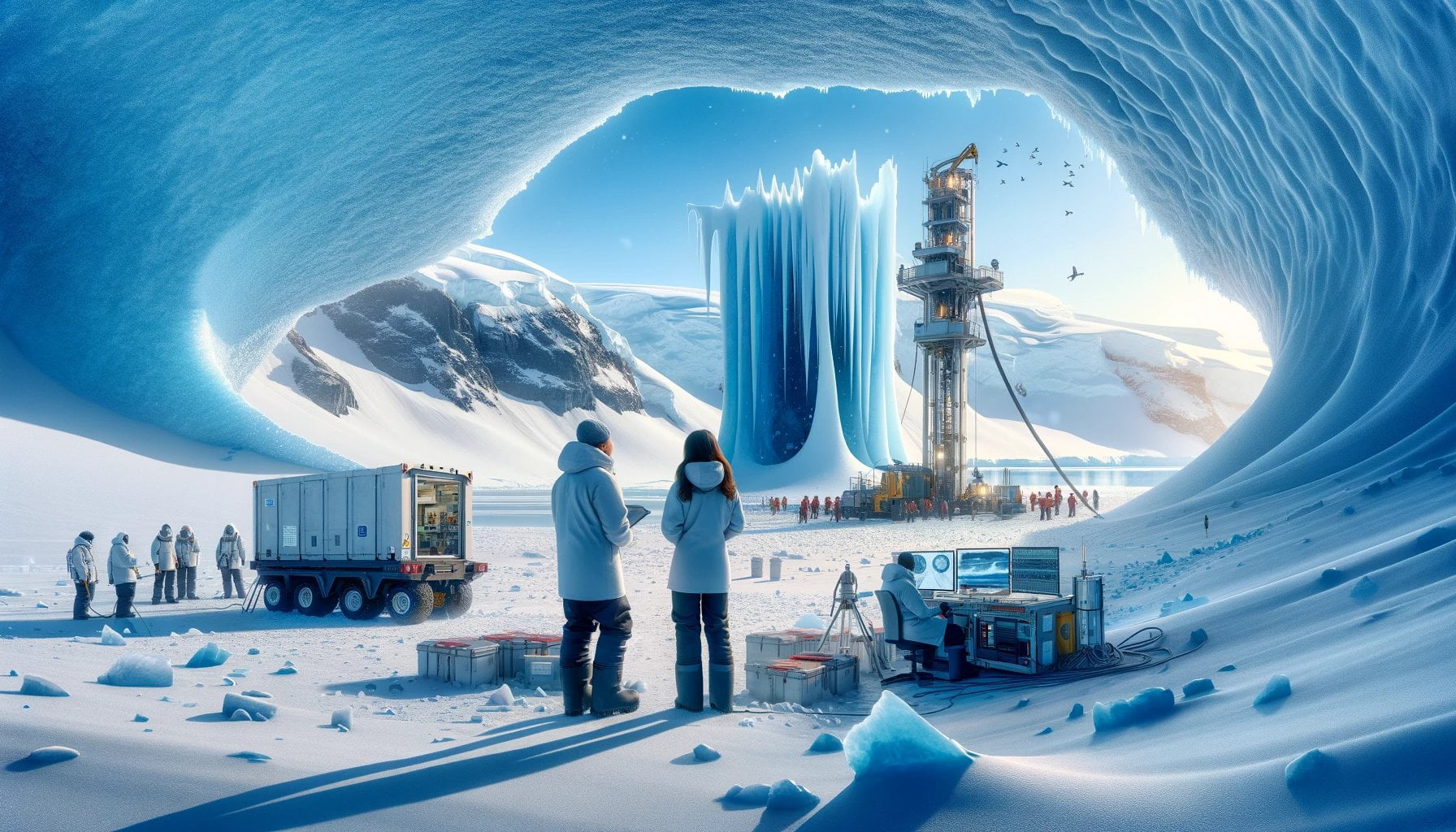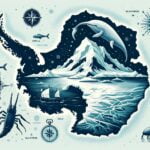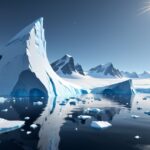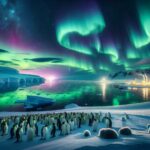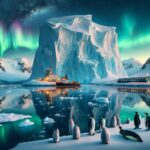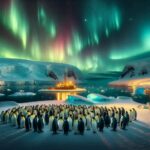Antarctica, the frozen continent that has captivated the imaginations of explorers and scientists alike, holds a secret so profound that it has eluded the grasp of most. Behind its icy veneer lies an enigmatic fact, hidden from the world for centuries. As an experienced journalist and avid truth-seeker, my quest for uncovering the mysteries of this remote land has brought me face to face with a revelation that will undoubtedly redefine our understanding of the continent. Join me on this expedition as we delve into this secret, navigating through the frosty landscapes to reveal the untold story that Antarctica guards so fiercely.
Key Takeaways:
- Antarctica is a continent filled with secrets and mysteries, including Nazi settlements and naval bases that invaded the land in 1937.
- The possible location of the lost city of Atlantis and ancient pyramids hidden under the ice make Antarctica even more intriguing.
- Blood Falls, a red-colored waterfall that flows from a glacier, is one of the fascinating phenomena found in Antarctica.
- Area 52, a rumored secret base for alien research, and reported UFO sightings add to the enigma of Antarctica.
- Antarctica holds subterranean mountains buried under the ice, which are believed to host diverse life forms.
- The continent’s dynamic nature and the changes happening beneath the ice have significant implications for global climate and ecosystems.
What is Antarctica’s secret fact?
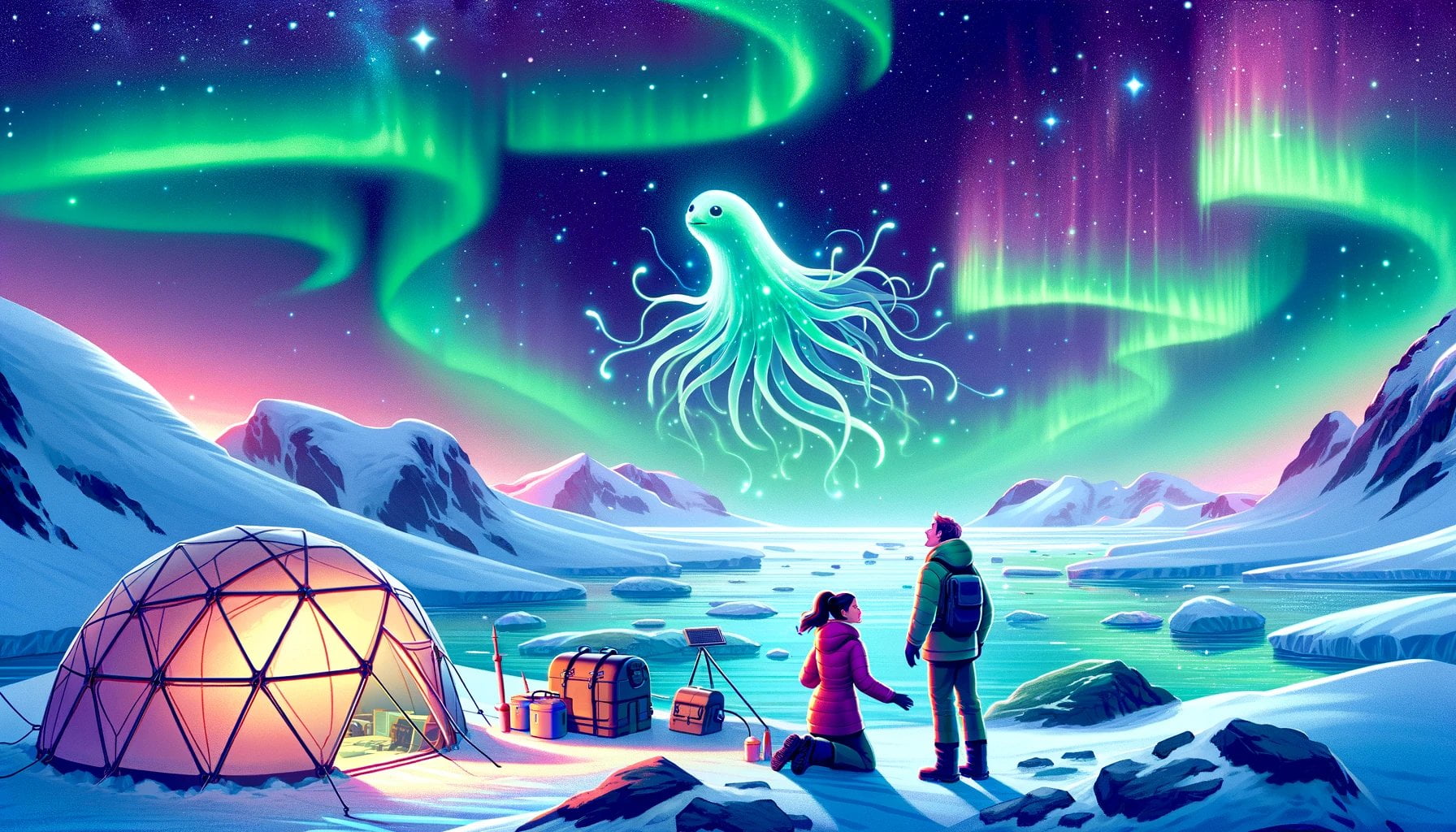
Antarctica, the frozen continent at the bottom of the world, holds many enigmatic secrets that continue to captivate scientists and researchers. Beyond its icy veneer, lies a world of mysteries waiting to be unraveled. From hidden Nazi settlements to the possibility of lost cities and even extraterrestrial activity, Antarctica’s secrets are diverse and intriguing.
Nazi Settlements: Unveiling a Dark Chapter
One of the most shocking secrets of Antarctica involves Nazi settlements that were established in 1937. The Nazis invaded Queen Maud Land, a territory claimed by Norway, and constructed naval bases on the icy fields. This revelation is a chilling reminder of the reach and ambitions of the Third Reich, even in the most inhospitable corners of the world. These settlements serve as a haunting reminder of a dark chapter in history.
Lost Cities and Pyramids: Treasures Beneath the Ice?
Antarctica’s icy expanse has long piqued the curiosity of explorers and adventurers. There have been theories and speculations about the possible presence of lost cities, including the legendary Atlantis. Some researchers even suggest that ancient pyramids could be hidden beneath the ice, waiting to be discovered. While these claims remain controversial, they add another layer of mystery to Antarctica’s secrets.
Bizarre Geological Phenomena: Blood Falls and Strange Ice Patterns
Antarctica is home to some truly remarkable geological phenomena. One such phenomenon is Blood Falls, a mysterious red-colored waterfall that flows from a glacier. This striking natural feature has baffled scientists for years, and its true origin still eludes us.
Additionally, explorations have revealed unusual shapes and patterns on the ice, which some believe could be evidence of ancient civilizations or hidden messages. These enigmatic formations continue to fuel speculation and intrigue, underscoring the hidden depths of Antarctica.
Extraterrestrial Connections: UFO Sightings and Alien Bases?
Antarctica has also become a subject of fascination in the realm of ufology. Reports of UFO sightings and alleged alien activity have surfaced over the years, leading to speculation about the existence of secret extraterrestrial bases. Although these claims lack concrete evidence, they contribute to the mysterious allure of Antarctica’s secrets and the possibility of encounters beyond our world.
The Uncharted Deep: Subterranean Mountains and Hidden Life Forms
While the vast majority of Antarctica’s secrets lie on its icy surface, there is also intrigue beneath the depths. Subterranean mountains concealed beneath the ice hold the promise of unknown ecosystems and hidden life forms. Explorations of the virtually unexplored ocean beneath the ice shelves surrounding the continent have unveiled new species and shed light on the extreme resilience of life in these hostile conditions.
Conclusion: An Icy Enigma Awaits
Antarctica’s secrets are as diverse as they are captivating. From echoes of a dark past with Nazi settlements to the possibility of lost cities and ancient pyramids, this frozen continent continues to astound us with its enigma. Bizarre geological phenomena, reports of extraterrestrial interest, and the discovery of hidden life forms underline the depths of Antarctica’s mysteries. As scientists and researchers continue to explore its icy expanse, the secrets of Antarctica may one day be fully unveiled, illuminating a hidden world that has fascinated us for centuries.
Sources:
- “10 Secrets Hidden Inside Antarctica” – The Truth Behind website – source
- “Antarctica’s Biggest Mysteries: Secrets of a Frozen World” – Live Science website – source
If you want to uncover intriguing facts about Antarctica, you’ll be amazed to discover these engaging “facts about antarctica” that will leave you in awe. So why wait? Click here to explore more!
Did you know that Antarctica isn’t just a frozen wasteland? Experience the wonders yourself and find out “What are 5 interesting facts about Antarctica?” by clicking here.
Embark on an exciting journey and dive into the captivating depths of knowledge as you unravel “What are 20 facts about Antarctica?” Click here to uncover the hidden secrets of this icy continent.
Looking for a quick dose of Antarctic excitement? Discover “What are 3 interesting facts about Antarctica?” by clicking here and prepare to be amazed!
Historical Events That Have Taken Place in Antarctica
Antarctica, the frozen continent at the southernmost tip of the world, may seem like an untouched wilderness, but it holds a fascinating history filled with remarkable events. From daring expeditions to remarkable scientific discoveries, Antarctica has been a stage for incredible feats throughout the years. Let’s take a closer look at some key historical events that have taken place in this enigmatic and mysterious land.
Early Explorations and Scientific Endeavors
In 1898, Adrien de Gerlache and his crew embarked on the first scientific expedition to Antarctica. Unfortunately, they quickly became trapped in pack ice off the Antarctic Peninsula, marking the beginning of Antarctic exploration. This expedition laid the foundation for future scientific research and sparked curiosity about the secrets locked away beneath the icy surface of the continent. [^1]
Antarctica’s movement southwards eventually led to its settlement around the South Pole, creating a unique environment cut off from the rest of the world. The isolation of Antarctica’s weather systems allowed for the development of distinct scientific phenomena, making it a captivating subject for researchers. [^2]
Geological Wonders and Historical Finds
Antarctica boasts a rich geological timeline, with the continent going through various eras. In the Cretaceous Era, it was a semi-tropical region teeming with forests, where dinosaurs roamed. As time passed, mammals replaced the dinosaurs, and Antarctica continued its journey towards the southern pole, gradually cooling. [^3]
While many mysteries surround Antarctica, including claims of hidden ancient civilizations and structures under the ice, the continent has unveiled its own secrets through scientific exploration. Scientists have discovered over 45,000 meteorites, ancient archaeological findings, and even rocks that originated from the Moon. These revelations have shed light on our planet’s history and the role Antarctica plays in unlocking its secrets. [^6]
The Allure of the Unknown
Antarctica’s allure lies not only in its geological and historical significance but also in the mysteries that shroud the continent. With claims of hidden pyramids, alleged UFO sightings, and reports of strange ice patterns, Antarctica has captivated the imaginations of many. These enigmatic elements contribute to the sense of wonder and fuel the desire to uncover the truth about what lies beneath its icy veneer. [^4] [^5]
From early explorations to scientific breakthroughs, Antarctica has witnessed events that have shaped our understanding of the world. The secrets it holds continue to fascinate scientists and explorers, igniting the hope of unraveling its mysteries fully in the future.
Key Takeaways:
- The first scientific expedition to Antarctica, led by Adrien de Gerlache, became trapped in pack ice in 1898, marking the beginning of Antarctic exploration. [^1]
- Antarctica’s movement southwards led to the isolation of its weather systems and unique scientific phenomena. [^2]
- Antarctica’s geological history includes a time when it was semi-tropical and home to dinosaurs, gradually becoming cooler over time. [^3]
- Scientific exploration in Antarctica has led to remarkable discoveries, including thousands of meteorites, ancient archaeological finds, and moon rocks. [^6]
- Antarctica’s mysteries, such as alleged UFO sightings and strange ice patterns, add to its allure and captivate the imagination. [^4] [^5]
Sources:
– Wikipedia
– Cool Antarctica
– The Ancient Code
– Discover Magazine
– Live Science
– Live Science
Fascinating Wildlife Found in Antarctica
Antarctica, a unique and enigmatic continent, not only captivates explorers and scientists with its vast icy landscapes but also harbors a diverse array of wildlife. In this article, we will explore the fascinating wildlife species that call Antarctica home and the remarkable adaptations that enable them to survive in this extreme environment.
Penguins: The Iconic Antarctic Creatures
Penguins are perhaps the most iconic creatures associated with Antarctica. These flightless birds have captivated the imagination of people worldwide and add to the uniqueness and charm of the continent. Several different species of penguins can be found in Antarctica, each with its own remarkable characteristics.
- Emperor Penguins: Known for their impressive size and striking appearance, Emperor Penguins are the largest of all penguin species. They possess the ability to dive to incredible depths and hold their breath for extended periods, allowing them to feed on fish and squid beneath the icy waters.
- Adelie Penguins: With their characteristic white eye rings and tuxedo-like markings, Adelie Penguins are known for their agility and excellent swimming abilities. They are highly adapted to the Antarctic environment and rely on their streamlined bodies and strong flippers to navigate through the icy waters.
- Chinstrap Penguins: Named after the distinctive black line that runs under their chins, Chinstrap Penguins are widely recognized for their unique appearance. These small penguins are incredibly agile climbers and can be seen perched on rocky cliffs and icebergs.
Unique Adaptations for Survival
Antarctica’s extreme climate presents numerous challenges for the wildlife that inhabit its icy landscape. To overcome these challenges, animals have developed remarkable adaptations that allow them to thrive in this harsh environment.
- Water-Repellent Plumage: Penguins and other sea birds in Antarctica have evolved specialized feathers that are layered with oil, making them water-repellent. This adaptation helps them stay dry in the frigid waters and maintain their body temperature.
- Denser Fur and Feathers: In order to combat the extreme cold, marine mammals such as seals and whales have developed dense layers of blubber, which acts as an insulating layer, keeping them warm in the icy waters. Similarly, penguins and other birds have feathered down, providing them with an extra layer of protection against the cold.
- Increased Eye Size: Many species of Antarctic birds, including penguins, have larger eyes compared to their counterparts in other regions. This adaptation allows them to maximize their visual capabilities in the low-light conditions of Antarctica, enabling them to better spot prey and navigate through the icy waters.
Key Takeaways:
- Antarctica is home to a diverse range of wildlife, with penguins being the most iconic species.
- Penguins, such as Emperor Penguins, Adelie Penguins, and Chinstrap Penguins, have unique characteristics and adaptations that allow them to survive in the extreme Antarctic environment.
- Water-repellent plumage, denser fur and feathers, and increased eye size are some of the adaptations that enable Antarctic wildlife to thrive in the icy conditions.
Sources:
Interesting Facts about Antarctica That Are Not Widely Known
Did you know that Antarctica is not just a frozen wasteland? This icy continent holds many intriguing secrets that are not widely known. In this article, we will delve into the enigmatic facts that lie beneath Antarctica’s icy veneer.
The Hidden Secrets of Antarctica
- Antarctica has a hidden underground lake: Deep beneath the ice, there lies Lake Vostok, one of the largest subglacial lakes in Antarctica. This mysterious body of water has been isolated from the outside world for millions of years, and scientists believe it could hold unique microbial lifeforms that have evolved in isolation[^1^].
- Antarctica is home to the oldest ice on Earth: The vast ice sheets of Antarctica hold ancient records of Earth’s climate. By drilling deep into the ice, scientists can extract ice cores that provide insights into past climate conditions stretching back hundreds of thousands of years[^1^].
Uncovering Antarctica’s Secrets
- Antarctica’s mysterious “blood falls”: In a remote corner of Antarctica, there is a waterfall unlike any other. The “blood falls” get their eerie red color from iron-rich brine water that flows from beneath the Taylor Glacier. This unusual phenomenon has captured the curiosity of scientists for decades[^4^].
- Antarctica’s hidden biodiversity: While Antarctica may seem like a barren land, recent discoveries have revealed a surprising array of microscopic life. From algae to bacteria, these organisms have adapted to survive in extreme cold and darkness, offering insights into the potential for life on other planets[^1^].
The Thriving Wildlife of Antarctica
- Antarctica is a haven for penguins: When you think of Antarctica, penguins immediately come to mind. But did you know that there are several species of penguins that call this icy continent home? From the iconic Emperor Penguins to the acrobatic Chinstrap Penguins, Antarctica provides a diverse habitat for these extraordinary birds[^2^].
- The remarkable adaptations of Antarctic wildlife: In order to survive in Antarctica’s harsh environment, its wildlife has developed incredible adaptations. Penguins have waterproof feathers, marine mammals like seals have blubber insulation, and birds have enhanced vision in low-light conditions[^2^].
Key Takeaways:
- Antarctica holds hidden treasures, such as the impressive Lake Vostok and ancient ice cores, which provide valuable insights into Earth’s past.
- The “blood falls” of Antarctica and its unique microbial life continue to fascinate scientists.
- Despite its extreme conditions, Antarctica is teeming with diverse wildlife, with penguins being the continent’s most iconic inhabitants.
Sources:
[^1^]: 29 Interesting Antarctica Facts | FactRetriever.com
[^2^]: 60 Interesting Facts About Antarctica – The Fact Site
[^4^]: 30+ Fun Facts About Antarctica – The Directionally Challenged Traveler
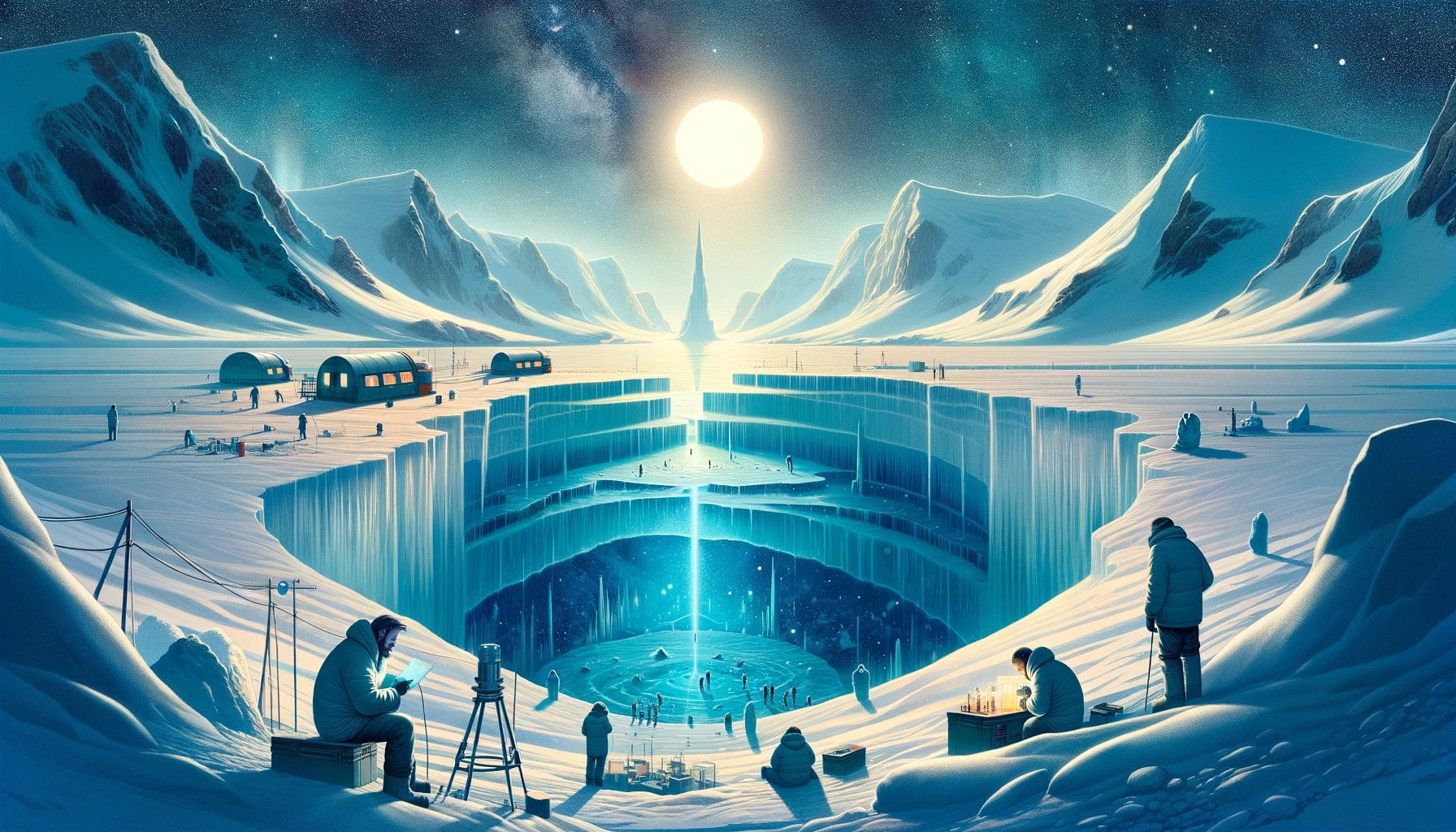
FAQ
Q1: What is the secret fact about Antarctica that remains hidden?
A1: Antarctica is shrouded in mystery and secrets, but one of the enigmatic facts that remains hidden is the existence of ancient civilizations, pyramids, and structures beneath the ice.
Q2: Are there any UFO sightings or reports of extraterrestrial activity in Antarctica?
A2: Yes, Antarctica has been associated with numerous UFO sightings and reports of extraterrestrial activity, adding to its allure and mystery.
Q3: Is there any evidence of Nazi settlements and naval bases in Antarctica?
A3: According to historical records and claims, the Nazis invaded Antarctica in 1937, took control of Queen Maud Land, and even established settlements and naval bases on the icy continent.
Q4: Are there any weather control experiments happening in Antarctica?
A4: Some theories suggest that weather control experiments might be taking place in Antarctica. These experiments, if true, could have significant implications for altering global climate patterns.
Q5: Have there been any discoveries of subterranean mountains and diverse life forms hidden beneath the ice in Antarctica?
A5: Yes, scientists have made remarkable discoveries of subterranean mountains buried beneath the ice in Antarctica. These mountains host diverse life forms, showcasing the dynamic nature of the continent’s hidden ecosystems.
- Unlocking 2-Letter Words with U: The Definitive Guide - April 4, 2025
- Unlock Words with the Letters THREE: Top Unscramble Tools 2025 - April 4, 2025
- Master Scrabble: X & Z Words for High Scores - April 4, 2025
